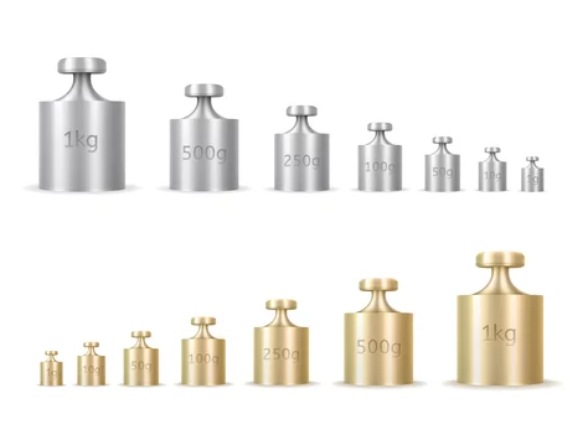Cooking is a universal language, but like any language, it has its own quirks depending on where you are. One of the most common challenges for home chefs and bakers is navigating different measurement systems. Recipes from the United States often list ingredient weights in pounds (lbs), while recipes from most other countries use kilograms (kg). Mastering the art of converting between these systems can make your cooking journey smoother and your dishes more successful.
Why Weight Conversions Matter in Cooking
Precision is key when it comes to cooking, especially baking. Unlike cooking, where you can improvise with a pinch of this or a dash of that, baking requires exact measurements to achieve the desired results. Misinterpreting or miscalculating ingredient weights can lead to underwhelming dishes.
Check out our Pounds Converter (lb)
The Basics of Converting Between lb and kg
The conversion formula is straightforward:
- 1 lb ≈ 0.453592 kg
- 1 kg ≈ 2.20462 lbs
To convert:
- From Pounds to Kilograms: Multiply the weight in pounds by 0.453592.
- From Kilograms to Pounds: Multiply the weight in kilograms by 2.20462.
Common Examples of Ingredient Conversions
Here are some typical ingredient weights and their conversions:
| Ingredient Weight (lb) | Equivalent in Kilograms (kg) |
|---|---|
| 1 lb | 0.45 kg |
| 2 lbs | 0.91 kg |
| 5 lbs | 2.27 kg |
| 10 lbs | 4.54 kg |
If you’re working with recipes from different regions, having these conversions handy can save you time and effort.
Practical Tips for Easy Conversions
1. Use a Kitchen Scale
A digital kitchen scale with both pounds and kilograms settings can make conversions effortless. Simply switch between units as needed for the recipe.
2. Download Conversion Apps
There are numerous apps available that allow you to input a weight and instantly see its conversion. These apps are great for quick and accurate results.
3. Keep a Conversion Chart Handy
Print out a conversion chart for common weights. Stick it on your fridge or inside a kitchen cabinet for quick reference.
4. Invest in Dual-Unit Measuring Cups
Some measuring cups display both pounds/ounces and kilograms/grams, making it easier to measure ingredients accurately without extra math.
Real-Life Scenarios: Why You Need Conversions
International Recipe Adventures
You find an intriguing European recipe for bread that calls for 1 kg of flour, but your flour bag lists weight in pounds. Knowing how to convert between the two ensures your recipe turns out as intended.
Bulk Ingredient Purchases
Buying ingredients like sugar or rice in bulk often involves weights listed in kilograms. Understanding conversions helps you estimate how much you need.
Meal Prep for Health Goals
If you’re tracking macros or calories, your meal prep might require weights in grams or kilograms, even if the recipe lists pounds. Accurate conversions are essential here.
Real-Life Scenarios: Why You Need Conversions
International Recipe Adventures
You find an intriguing European recipe for bread that calls for 1 kg of flour, but your flour bag lists weight in pounds. Knowing how to convert between the two ensures your recipe turns out as intended.
Bulk Ingredient Purchases
Buying ingredients like sugar or rice in bulk often involves weights listed in kilograms. Understanding conversions helps you estimate how much you need.
Meal Prep for Health Goals
If you’re tracking macros or calories, your meal prep might require weights in grams or kilograms, even if the recipe lists pounds. Accurate conversions are essential here.
Examples: Converting Ingredient Weights
Example 1: Converting 2 lbs of Sugar to Kilograms
- Start with the weight in pounds: 2 lbs.
- Multiply by the conversion factor (0.453592).
- Calculation: 2 × 0.453592 = 0.91 kg
The result is 0.91 kg.
Example 2: Converting 1.5 kg of Flour to Pounds
- Start with the weight in kilograms: 1.5 kg.
- Multiply by the conversion factor (2.20462).
- Calculation: 1.5 × 2.20462 = 3.31 lbs
The result is 3.31 lbs.
Common Mistakes to Avoid
1. Rounding Too Soon
While it’s tempting to round off the conversion factor (e.g., 0.45 instead of 0.453592), this can lead to small inaccuracies that add up, especially in larger quantities.
2. Confusing Ounces with Pounds
Remember that 1 lb = 16 oz. Make sure you’re not accidentally converting ounces to kilograms instead of pounds.
3. Ignoring Recipe Context
Sometimes recipes include slight weight variations to account for regional ingredient differences. Pay attention to recipe notes for guidance.
Try out our Free Math and English Worksheet Generators
Making Cooking Stress-Free
With the right tools and knowledge, converting ingredient weights between pounds and kilograms becomes second nature. Whether you’re experimenting with recipes from around the world or simply ensuring your measurements are precise, these conversion tips will elevate your cooking skills.
Final Tip: Trust the Process
Cooking is as much about practice as it is about precision. While conversions are important, don’t be afraid to experiment and learn along the way. With time, you’ll become more confident navigating between pounds and kilograms, making your kitchen an even more creative space.
Happy cooking!
